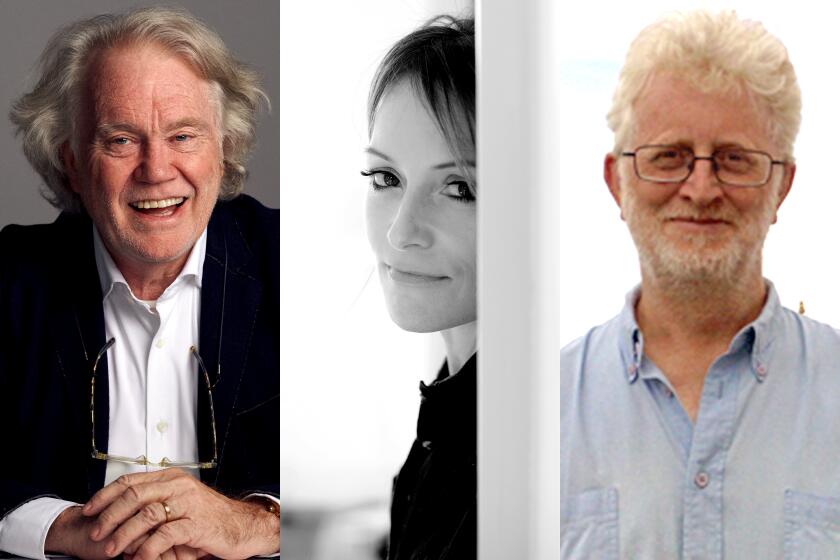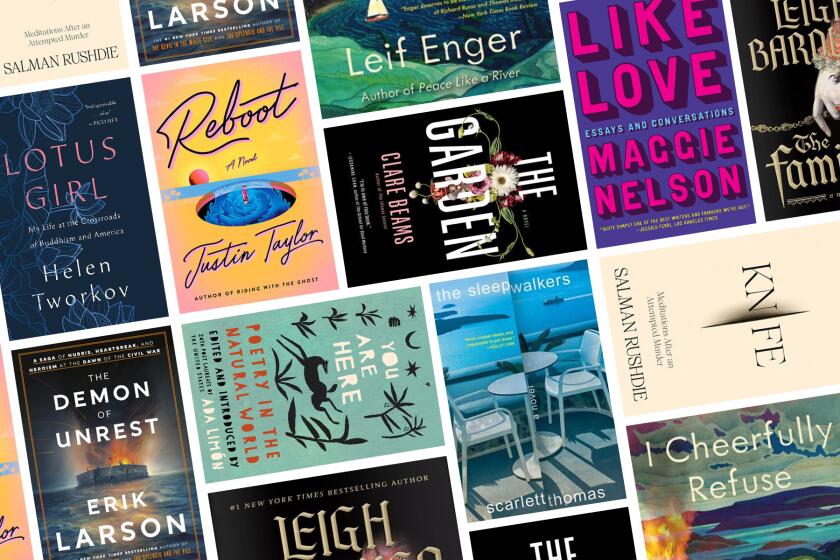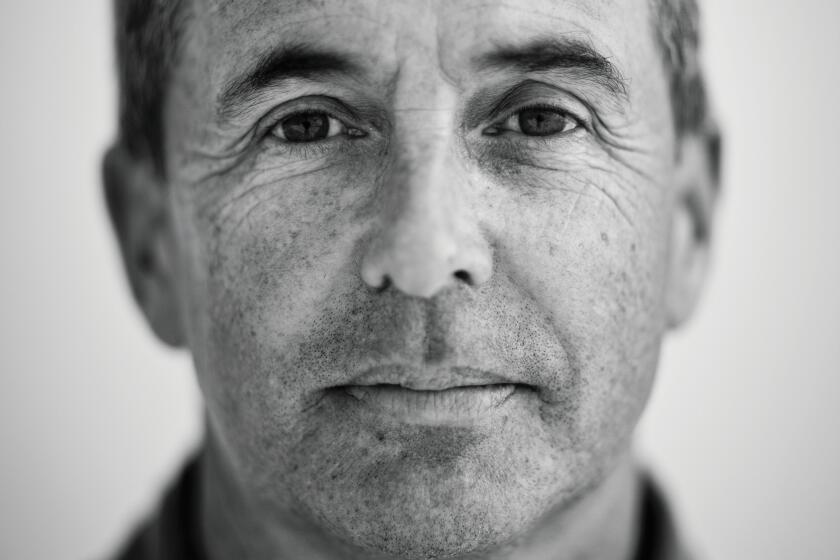3 best mystery books to read this spring
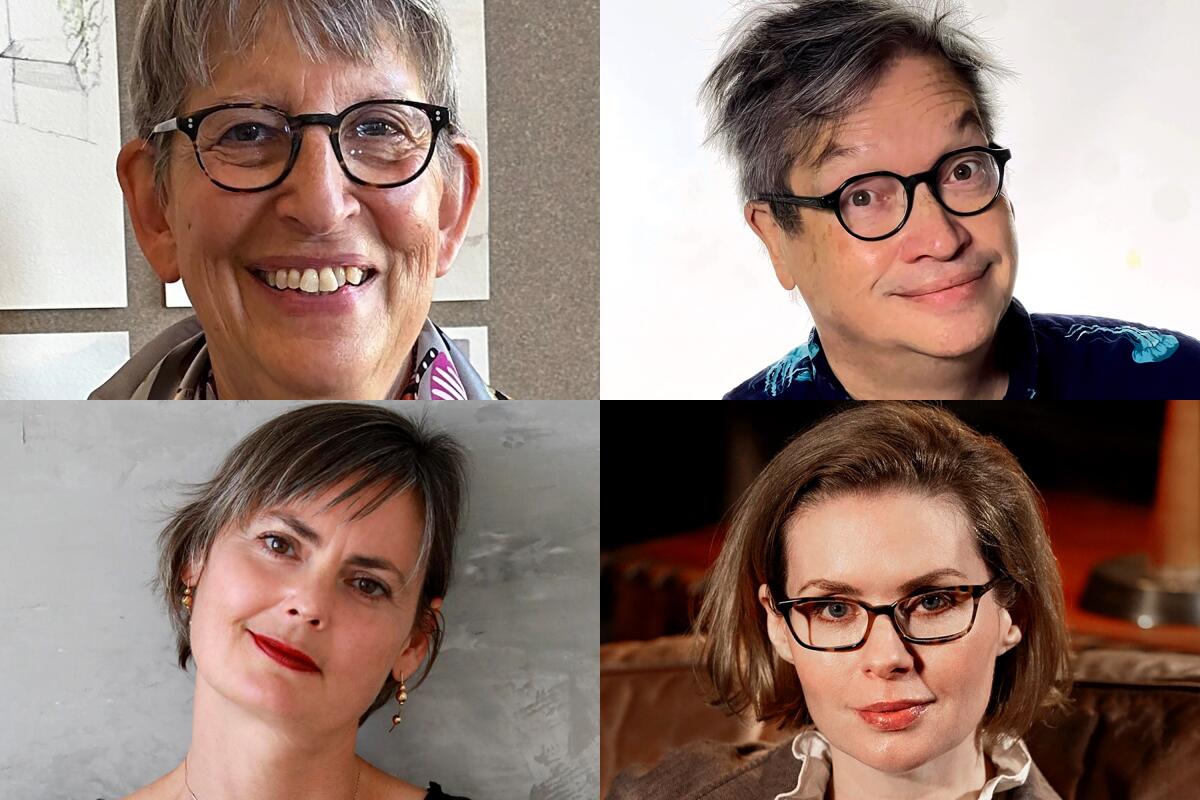
- Share via
Dying to Know
4 Mystery Writers Answer Burning Questions
If you buy books linked on our site, The Times may earn a commission from Bookshop.org, whose fees support independent bookstores.
Explore the mysteries of fictional and real worlds with four Los Angeles writers who pay homage to giants of the genre while creating stories that are irresistible in their own right.
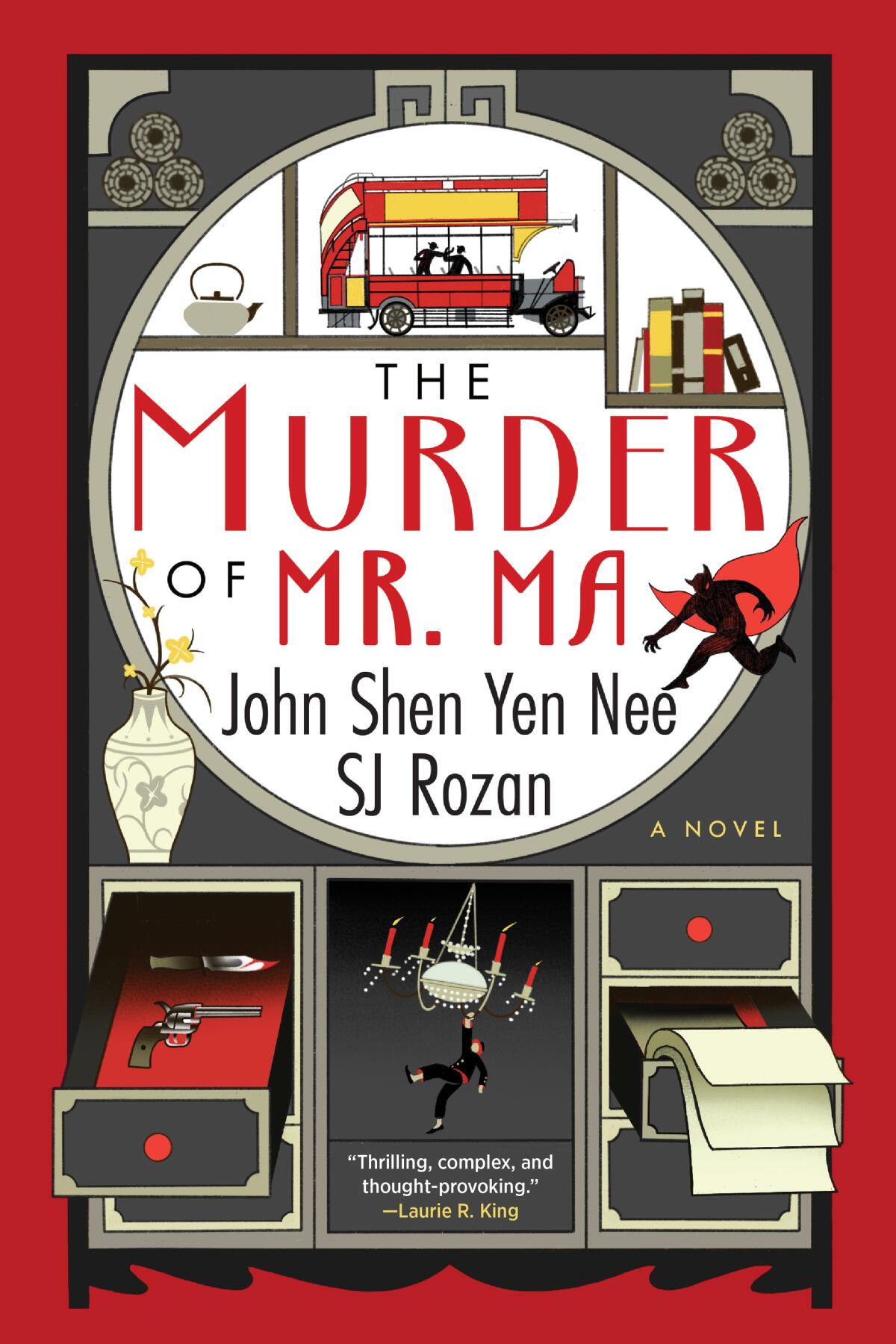
The Murder of Mr. Ma
By S.J. Rozan and John Shen Yen Nee
Soho Crime: 312 pages, $26
“The Murder of Mr. Ma” combines first-time author John Shen Yen Nee’s experience in comics and digital storytelling with the mystery-writing chops of veteran S.J. Rozan. The novel reimagines two Chinese historical figures — magistrate Di Renjie, popularized in Judge Dee mysteries and numerous film adaptations, and novelist Lao She — and drops them into 1924 London, a period rich in Sino-British intrigue. Twentysomething Lao She is a lecturer attempting to teach Chinese to “people whose need to learn it far outstripped their interest in doing so” and looking for an idea for a novel when he’s asked by Bertrand Russell to help the renowned Judge Dee escape from jail, where he’s been rounded up with a group of Chinese agitators. Though their plan goes sideways, Lao She and Judge Dee form a bond that carries them into the murder investigation of Ma Ze Ren, a Chinese national and shop owner who served with the Chinese Labour Corps in France during WWI.
Drawing inspiration from the Holmes/Watson dynamic and the long tradition of gong’an crime fiction in China, the intrepid duo’s investigation draws readers into the Chinese presence in WWI and postwar London. Along the way, they reveal the intersection of real-life figures like Russell and Ezra Pound in Sino-British relations, the early British film industry’s lucrative “yellow peril films” and much more. Also engrossing are the rich details of Chinese culture and traditions familiar to readers of Rozan’s Lydia Chin/Bill Smith mysteries, while the vivid action scenes feel as visceral as a Chow Yun-fat circular kick with double forearm strike.
A sparkling and thought-provoking debut of a fresh dynamic duo whose adventures I’ll be eager to follow.
Three writers of recent espionage fiction, Terry Hayes, Lea Carpenter and David Downing, turn their keen powers of observation on 1950s Los Angeles, current-day Europe and beyond to shed light on their times — and, chillingly, ours.
Although you have independently had success in different creative fields, yours is a first-time collaboration. What did each of you bring to the pairing?
S.J. Rozan: John brought more historical knowledge and understanding than anyone I’d ever met. He also brought the outline, which was a great gift. I’m not an outliner; I can’t create a character until I see her act. The process of writing my own books is filled with angst. John had a complete story.
John Shen Yen Nee: Which S.J. operated on, surgically removing parts and Frankensteining other things in. And then she gave the characters three full dimensions, gave the settings atmosphere and gave the story rhythm.
How do you reimagine the historical Di Renjie? And why pair him with Lao She?
Rozan: The relationship between the real Judge Dee and the stories translated by, and the new ones written by, Robert van Gulik is a bit like that between the real Robin Hood and the stories about him. There was such a man, but the legend outgrew him. So we felt allowed to add to the legend.
Nee: The historical Judge Dee was known for solving all his cases, and for exacting demanding justice. He wasn’t a physical hero, a martial artist. We added that. Lao She, a writer revered in China, then banned, then “rehabilitated” and once again revered, seemed like the perfect soft-spoken, smart, brave but slightly behind narrator to tell Dee’s stories.
Who is your favorite Golden Age mystery writer and why?
Nee: Hands down, it’s Agatha Christie. I really liked the way that she used Captain Hastings as a narrator with Hercule Poirot. I’m a giant fan of Poirot, and I thought it would be fun to create a Chinese detective that wasn’t a caricature of the “Insidious Chinaman” (Fu Manchu) or someone like Charlie Chan.
Rozan: Christie for me too. She’s admired for her plots, but I don’t think she gets enough credit for her understanding of people, of motive. Motive is what has always interested me.
Books to read in April include Ada Limón’s poetry anthology about our fragile world and Salman Rushdie’s memoir about being stabbed on stage in 2022.
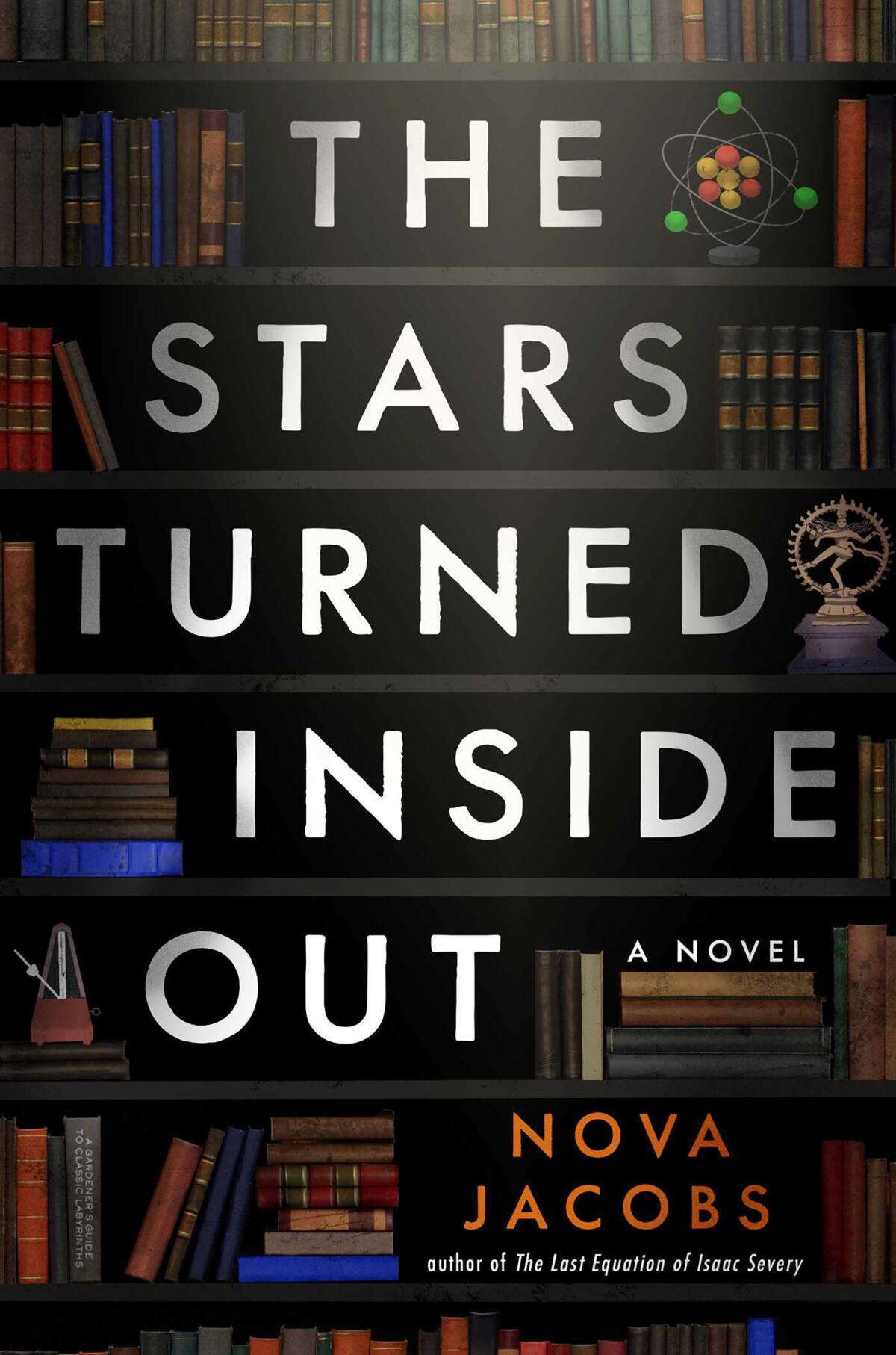
The Stars Turned Inside Out
By Nova Jacobs
Atria Books: 320 pages, $28
In 2018’s Edgar-nominated debut, “The Last Equation of Isaac Severy,” Nova Jacobs incorporated STEM into a mystery that was approachable and highly engaging. She’s at it again with “The Stars Turned Inside Out,” set among physicists working at the CERN laboratory’s Large Hadron Collider outside of Geneva. A CERN engineer discovers the body of recent hire Howard Anderby in an LHC tunnel shut down for repairs, presumably killed by radiation exposure. Yet the collider had not been turned on nor do videos of the tunnel show anyone present.
The CERN director calls in Sabine Leroux, a “consulting detective” and friend, to secretly investigate. Chapters from the point of view of Leroux — an outsider who employs Poirot-inspired investigative methods — contrast with those centered on Eve Marsh, a young postdoctoral physicist and colleague crushing on the handsome Anderby while harboring her own secrets and professional worries.
While the novel exposes the professional rivalries and hidden desires of a sensitively drawn group of Anderby’s colleagues and frenemies, it’s also a touching story about love and friendship, born of sorrow and guilt. Then the novel takes a metaphysical turn that is wholly unexpected. Who knew particle physics could be so bewitching?
What inspired you to combine physics and a locked-room mystery?
I didn’t initially think of my book as a locked-room mystery, though I very much set out to write a classic whodunit in a physics setting. It was the CERN laboratory’s Large Hadron Collider (LHC) that first captivated my imagination, not just as an intensely complex machine but also as very much its own place unlike any on Earth. I saw a 2013 documentary about CERN, which features a shot of an engineer bicycling through the LHC tunnel during a collider shutdown. The contrast between this sophisticated machine and the very low-tech manner in which engineers travel along the pipe really delighted me.
Why did you write two such different but engaging central characters?
I didn’t want every single character to be a scientist, which seemed a recipe for a static story. I was interested in creating some kind of tension between science and not-science. So in switching between a woman who has devoted her life to particle physics yet is questioning her own choices (Eve) and a detective who’s rejected a strictly scientific path (Sabine), I was able to create that necessary push and pull in the novel between the sciences and the lay world.
Who is your favorite Golden Age mystery writer and why?
Agatha Christie and Dorothy Sayers are inescapable early loves and ongoing favorites. But G.K. Chesterton is up there for me simply for “The Man Who Was Thursday: A Nightmare,” which is one of the most inventive mysteries I’ve ever encountered. It also reads as a kind of spy thriller, with a speculative depth lurking beneath its multiple switchbacks in plot. It remains one of the most buoyant, mischievous and surprisingly metaphysical pieces of fiction I’ve ever read.
Don Winslow reveals why his latest novel, ‘City in Ruins,’ the final installment in the Danny Ryan series, will be his last.
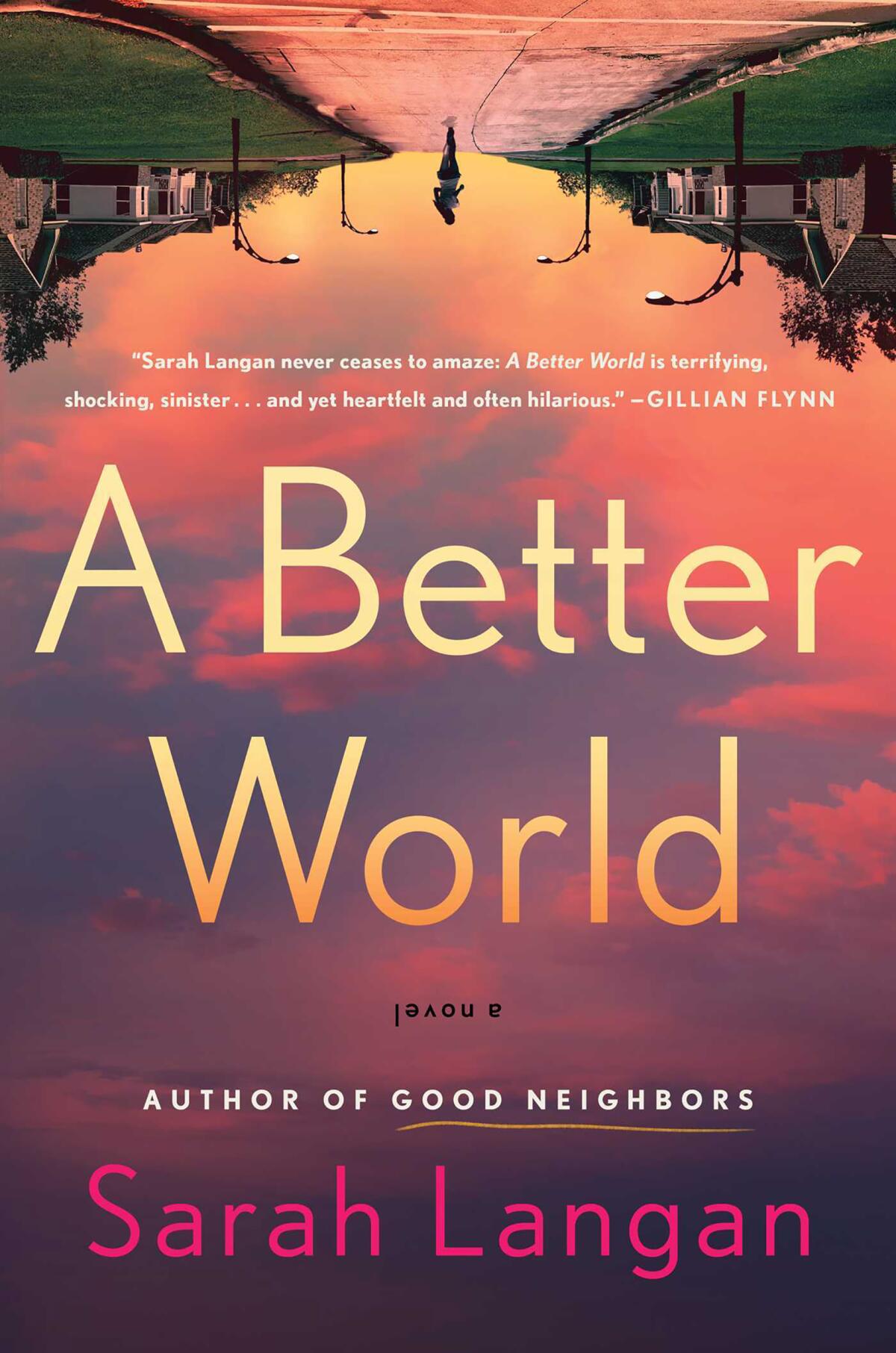
A Better World
By Sarah Langan
Atria Books: 368 pages, $29
In “A Better World,” Sarah Langan paints a disturbing picture of a late 21st century world not that far removed from our own. In the United Colonies and around the world, it’s the “Era of the Great Unwinding,” a time when “the institutions, laws and even the bridges and roads that people had come to depend upon were falling apart.” Those with the means and connections are fleeing to company towns. One such town is Plymouth Valley, or PV as it’s called by insiders, in South Dakota. Owned by BetterWorld, makers of Omnium, a biodegradable polymer made from recycled plastic, PV is the seat of operations for the multinational conglomerate and home to its top executives and scientists.
It’s also the last chance for the Farmer-Bowens family, Brooklynites drowning in debt, rising waters and crime. Linda Farmer’s job as part-time pediatrician at a free clinic doesn’t cover the bills. Her husband, Russell Bowens, has been laid off from his job as a science advisor in the EPA’s regulatory department. Then the family is thrown a lifeline — a job for Russell at BetterWorld, plus all living and education expenses paid. The job also comes with the ultimate perk — a golden ticket to live in PV forever, earned for the family once Russell satisfactorily completes 25 years of service. Bottom line, the recruiter tells them: “Your children will be set for life.” It’s a sacrifice any parent would make, right? What could be wrong with that?
Turns out plenty, much of it revolving around a set of customs called Hollow, a genetically engineered carnivorous bird called a caladrius and the increasingly bizarre behavior of the cosmetically perfect locals. As the family tries to fit in, Linda begins investigating what an unhinged mother swears is the kidnapping of her two children, both of whom are fighting a rare form of cancer. A potent cocktail of horror, suspense and thriller, “A Better World” is a cautionary tale of a family’s sacrifice gone wrong and a high-water mark in the career of a novelist who’s already won three Bram Stoker Awards. My only warning: Don’t start this book on a school night. Beware the sacrifice!
To put it mildly, Plymouth Valley is a company town on steroids. What inspired it?
About 10 years ago, a friend gave me a tour of the Google offices in Manhattan. They’re fantastic. They have everything; you never need to leave. Plus, everyone there is hard-working and pleasant — the kinds of people you’d love to spend time with and learn from. I can see the appeal. Who wouldn’t take that job?
In my fictional town, the have-nots are all outside PV’s high walls and therefore invisible. But the kinds of people who can tolerate that cognitive dissonance — their work scaffolds their privilege but also hurts the world — tend to become erratic and prone to magical thinking. They’ll believe any story, submit to any absurdity, so long as they don’t have to admit they’re the villains.
For all of the thriller and horror tropes in “A Better World,” I was intrigued by the intimate portrait of the Farmer-Bowens family. Can you share a bit about why families in distress are so central to your story?
Families fascinate me. We all come from family; we’re all seeking chosen families. The good and the bad that we learned from our birth families, we project onto our new families. Through our children, we understand our parents. Or we understand them a lot less than we thought.
What both this novel and my last, “Good Neighbors,” have in common is this question: How much would you sacrifice for your children? How much of your own morality would you violate to keep them safe? And the question that comes after that: Should you sacrifice that much? Is it good for you? For them? For the world?
I felt like there were a lot of classic genre echoes in “A Better World” — Shirley Jackson’s “The Lottery,” Ira Levin’s “The Stepford Wives” and “Rosemary’s Baby,” even Aldous Huxley’s “1984.” Were there classic genre writers on your mind as you were writing the book?
I had those works on my mind, as well as “The Handmaid’s Tale” for its theocratic world-building. And Alice Munro’s “The Beggar Maid” never leaves my thoughts. A book I’d also like to shout out, because not enough people have read it, is Kate Wilhelm’s “Where Late the Sweet Birds Sing.” In preparation for writing “A Better World,” I also watched “Chinatown.” I was inspired by the great conspiracy at the center of the story, and [John] Huston’s villain. I mean, that’s a villain!
A member of the National Book Critics Circle, Woods is the editor of several anthologies and four novels in the “Charlotte Justice” mystery series.
More to Read
Sign up for our Book Club newsletter
Get the latest news, events and more from the Los Angeles Times Book Club, and help us get L.A. reading and talking.
You may occasionally receive promotional content from the Los Angeles Times.
